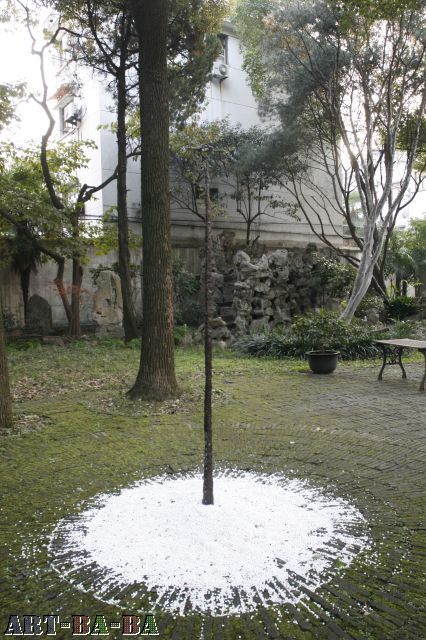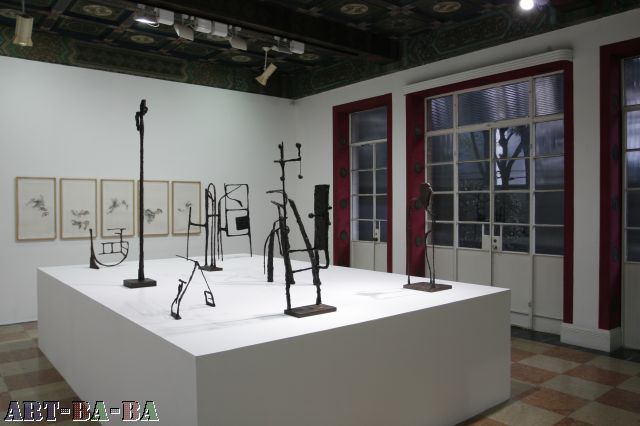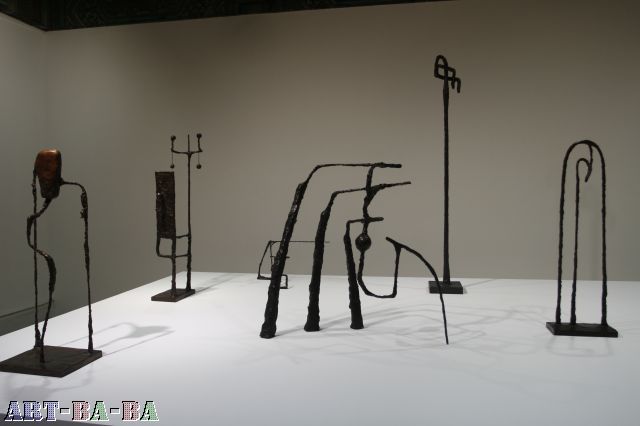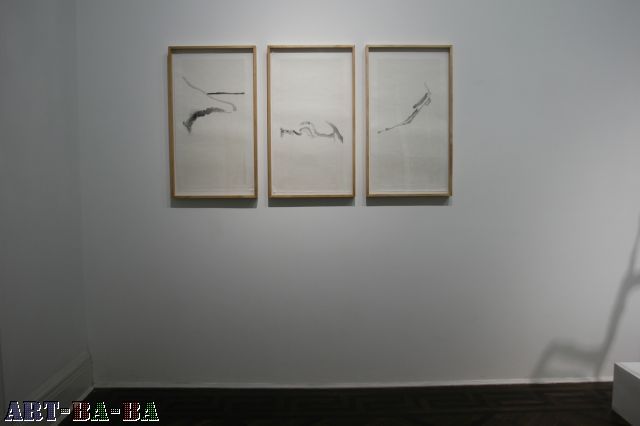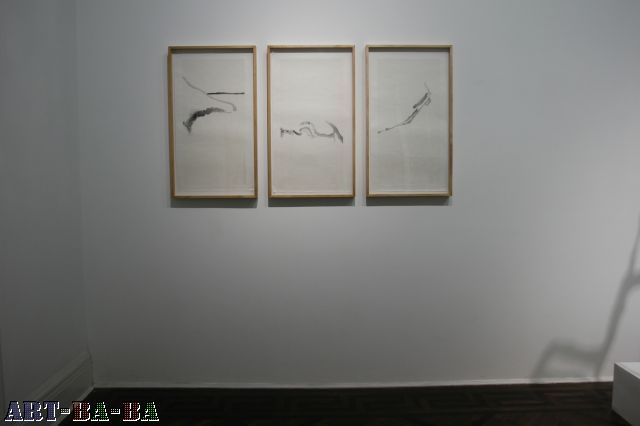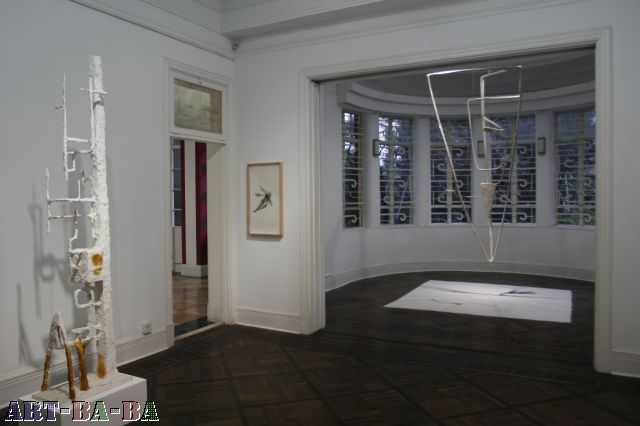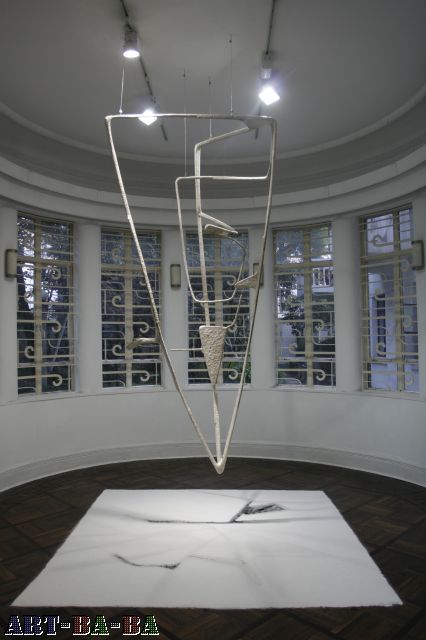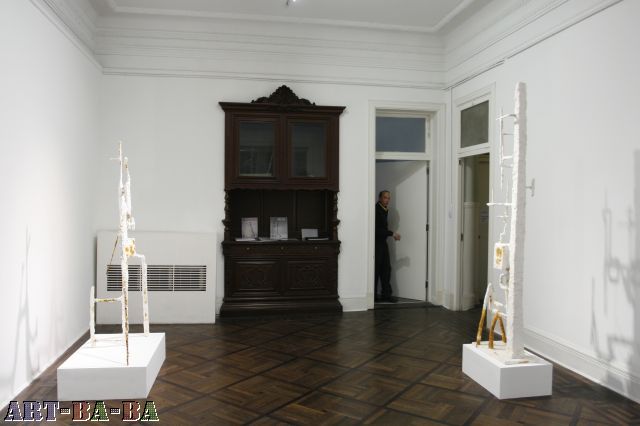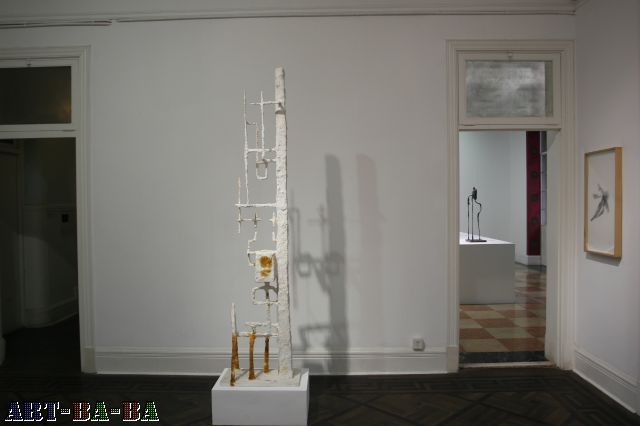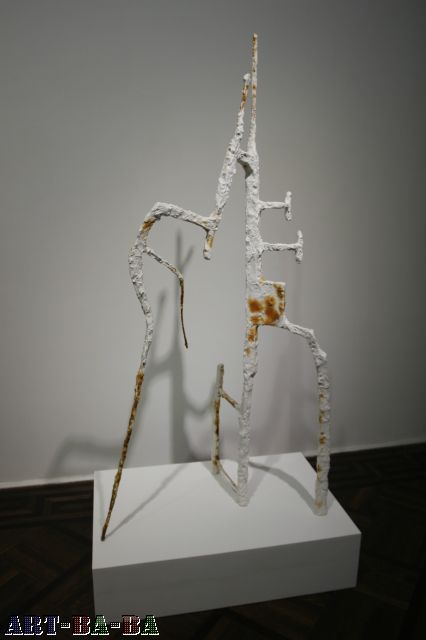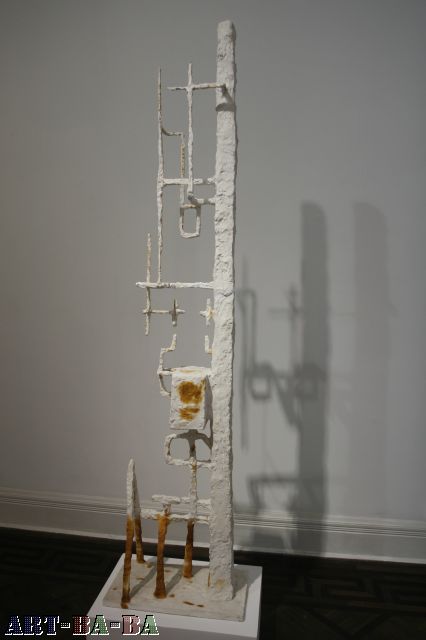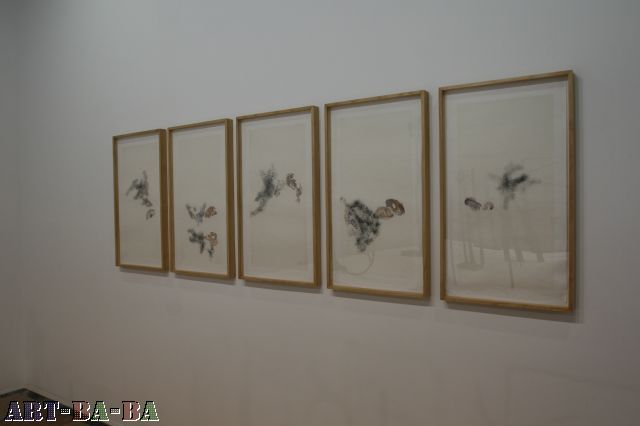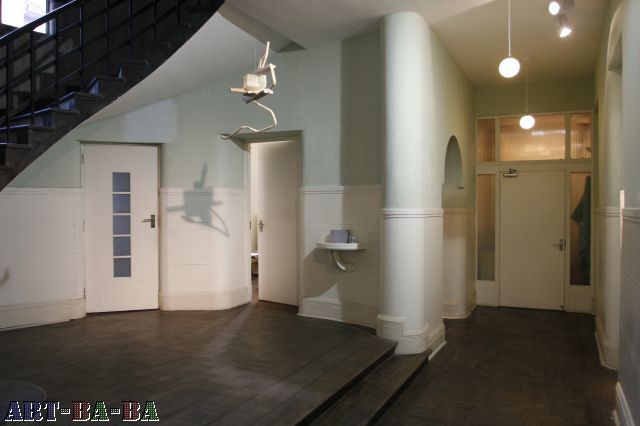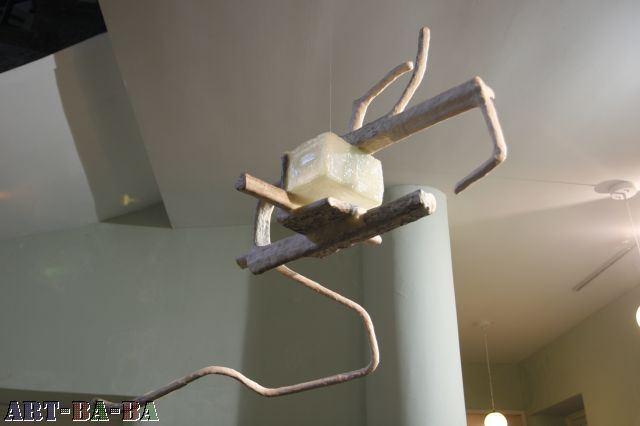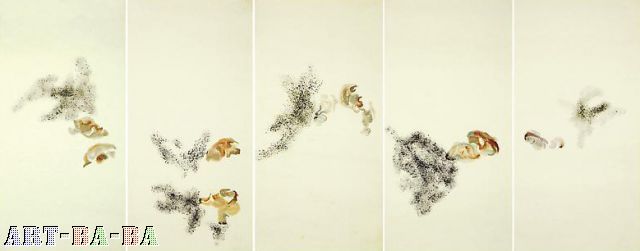“子曰”, 王燮达个展
James Cohan画廊 (上海徐汇区岳阳路170弄1号楼1楼,近永嘉路)。2011年11月26日至2012年1月19日。
From Randian燃点
前往观看一个当代水墨气质的雕塑个展,往往会带有预先印象,之前看过的类似名目的展览罩在头上嗡嗡作响。
冬日午后的明亮阳光穿过枝繁叶茂洒落在James Cohan前庭花园中央的一根“三叉戟”上,这根类似波塞冬神仗的瘦长铜雕立在脚下的浅堆白沙间,于一片绿意中昂首挺胸,不自视外。
王燮达从2002年开始创作的《子曰》系列雕塑洋溢着Alexander Calder和Joan Miró的童趣神气,或蜿蜒流转或单线延伸的纤薄仿若活物般游走试探,如蛇如山,如荒凉中陡然出现、供人攀爬的铜架,独成一派山水,星球运转其间,嬉戏逗留,不忍离去。与这组微缩结构相邻为伴的恰是其镜面显影:多联幅纸本中墨碳拓印出雕塑的神,零散的汉字笔画跃然于九宫格上,如鱼儿出水,勾勒灵运贯通的线条,线条勾勒出入空间的游戏。
圆形展厅中从天而降的藤制雕塑投影在下方的纯白细沙上,和画于细沙之上的墨色碳粉连起出笔,借光之影绘书之画,雕塑本身的存在被投影所消解,融入地上一方“印章”里,随日起日落变幻往复。一旁的白石膏雕塑裸出斑驳锈痕,同样见证时光流逝。
“子曰”之子,可是各位先圣,其中定有书圣王羲之,雕塑之气、力、韵、动皆来自书法之提、按、墨、速。其后与太太劉楚荺的鸳鸯联展“忘机”取自鸥鹭典故,王燮达在上海近郊耕田静心,亲自前往纸厂淘来将树皮、碎竹捶捣漂洗而成的手工纸,为其纸本的“忘机”打底。创作所选铜、布、藤、沙、碳皆为自然之材,有机硅胶为雕塑、纸本融入透明温润的肌理,与铜雕和谐相长,让人不禁伸手探触,仿佛徒生温度。
王燮达的乡下月亮不是朵云轩信笺上的湿晕,更比城里的大,圆且白。
translated by Olivia Jingjing Chen
It is hard not to have preconceived notions in mind when going to an exhibition of sculptures that is said to be influenced by contemporary ink art. One’s head buzzes with echoes of previously seen shows before even laying eyes on the works.
Entering the courtyard of James Cohan gallery in Shanghai, one sees the afternoon sunlight of a winter’s day pouring onto the greenery, while a trident stands like Poseidon’s staff amid a shallow pile of white sand, surveying the sight.
In 2002, Wang Xieda started the Sages’ Sayingsseries of sculptures, which are infused with the playfulness of Alexander Calder and Joan Miró. By turns fluid and direct, the lines in his sculpture seem alive, while the works stretch out like strange copper frames in a far-off, desolate land, as though made for people to climb on. The personal style inherent in the works certainly makes one long to stay. And this set of miniature structures is accompanied by its own mirror image: the divine imagery in ink, and the scattered Chinese characters that seem to leap out of the square calligraphy practice sheets much like fish frolicking in lakes. There is also a rattan sculpture hanging from the ceiling that leaves shadows on the white sand beneath, in contrast to the ink painted on the sand. Shadows thus write calligraphy, and the existence of the sculpture is dissolved by its own projection, merging with the “prints” below and mutating with the rise and fall of the daily sun. The adjacent white plaster sculpture exposes rust, a marker of the passing of time.
The “sages” in “Sages’ Sayings” refer to all kinds of sages, but the master calligrapher Wang Xizhi must surely be counted among them. The spirit, power, vitality and echoes we see in the sculptures spring from calligraphy. In a previous exhibition by Wang Xieda did with his wife, “Forgetting Craftiness” (忘机) the theme was inspired by an ancient Chinese story about the purity of motives (鸥鹭忘机). Wang Xieda, living off the land on the outskirts of Shanghai as a contemplative practice of life, got natural handmade paper for the exhibition in order to establish some sort of baseline to the paper paintings of “Forgetting Craftiness.” Copper, fabric, rattan, sand, charcoal were all natural materials he used in his creations, while the organic silica gel gave his sculpture and paper paintings a transparent and gentle texture. It also works in tandem with the copper to give off a sense of warmth.
Wang Xieda’s rustic moon is not the wet, watery moons of Duoyunxuan letterheads that were much beloved by Eileen Chang, but compared to the moons of cities and urban life, it is big, round, and white.
